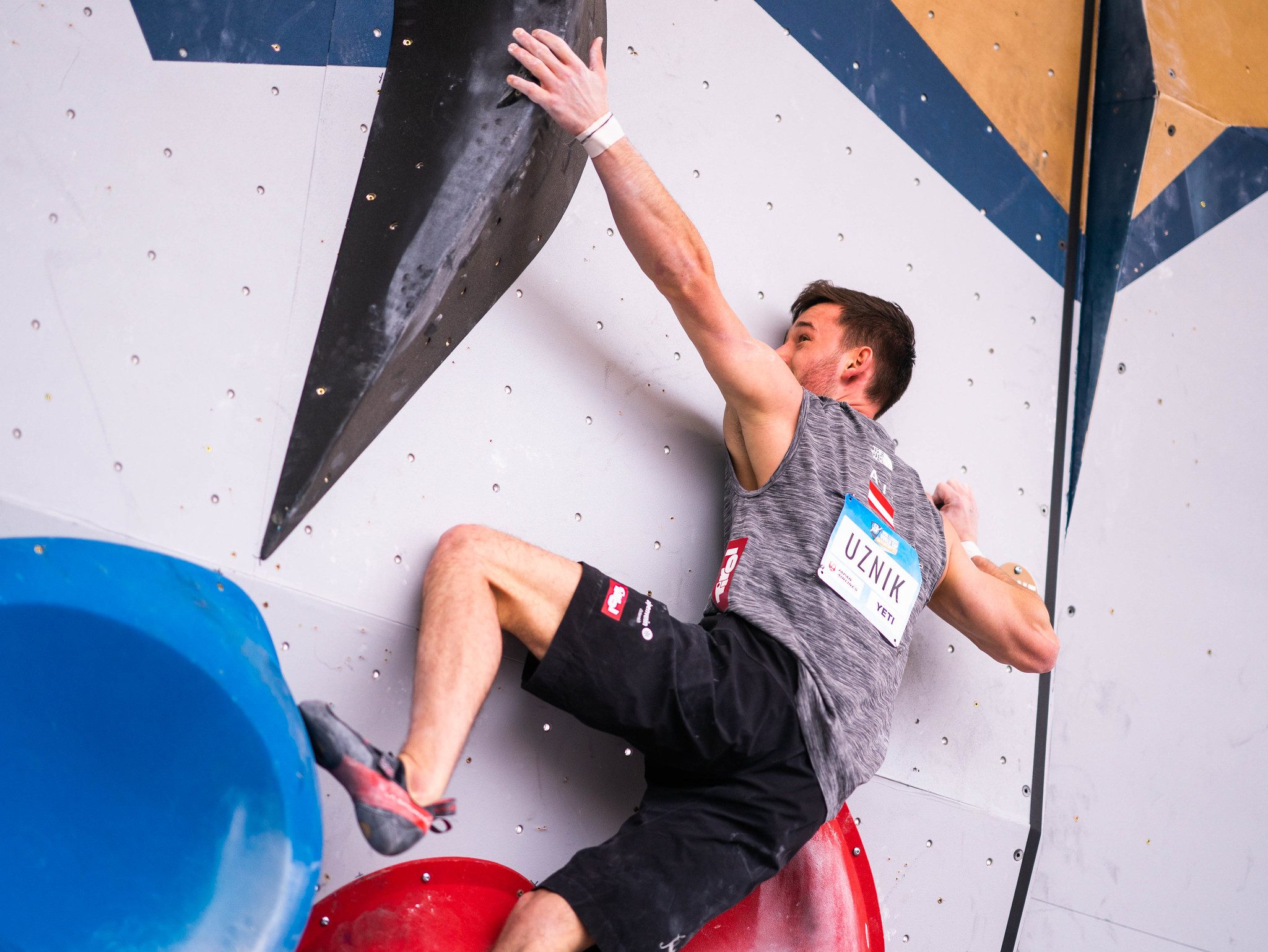Train Lock-Off Strength with This Unique Bouldering Workout
You'll pause and hover over holds in this exercise, forcing your body into complex lock-off positions
 Photo by: Jan Virt/IFSC
Photo by: Jan Virt/IFSC
On a hangboard or pull-up bar, we often train lock-offs in the same orientation every time. It can be a useful exercise to instead train lock-offs on the wall. Through specific lock-off training while climbing, you can develop shoulder strength, core strength, technique, and balance across a wide range of lock-off positions. In this interesting bouldering workout, you’ll refine your lock-off technique and strength by performing a series of three-second hand hovers over holds before you latch them.
Some of these lock-offs will be deep, with an acute bend in the elbow. Others will be shallow, with an elbow bend of 120 degrees or more. The position may be directly overhead, diagonally out from the body, or in a side-pull position. Others might be in funky orientations such as a gastons or underclings. Training this variety of real-world climbing positions helps build bomb-proof shoulders while also refining technique.
The execise is also great for building confidence in static movement. Gym climbers often have a tendancy of moving dynamically from one hold to the next. In general, gym holds are big and grippy, perfect for taking advantage of momentum from hold to hold. Climbing outdoors often requires much more static technique. Hand and foot holds are often much smaller on real rock, requiring slower, more precise movements.

Here’s an outline of a typical 25-minute three-second hover bouldering workout:
- Choose a boulder problem that you think would be possible to send statically. You can use your gym bouldering wall, spray wall, Kilter Board, or Moon Board. The moves should contain no mandatory dynos, big throws, or lunges. Aim for a problem between six and nine moves long.
- As you climb the problem, before grasping any new handhold, hover your hand a couple of centimeters about the new hold. This will force your non-hovering arm to hold a unique lock-off position.
- While holding this three-second hover, keep your shoulders engaged and your core tight. Consider your optimal body and foot position to make the hover feel easier.
- Climb the problem three times, resting two minutes between reps.
- The goal of the workout is to perform three reps of three different problems. Rest two minutes between reps and five minutes between problems.
You shouldn’t be failing during the workout but it should feel difficult to complete. If it feels too easy, try harder problems at your next training session, particularly ones on steeper terrain. If the problems feel too difficult, try using open feet or lower V-grade problems on less steep walls. Perform this workout once per week on a shoulder strengthening day.



